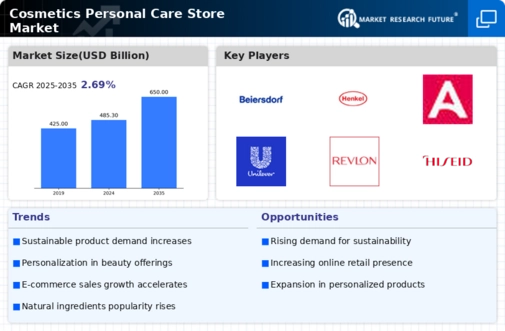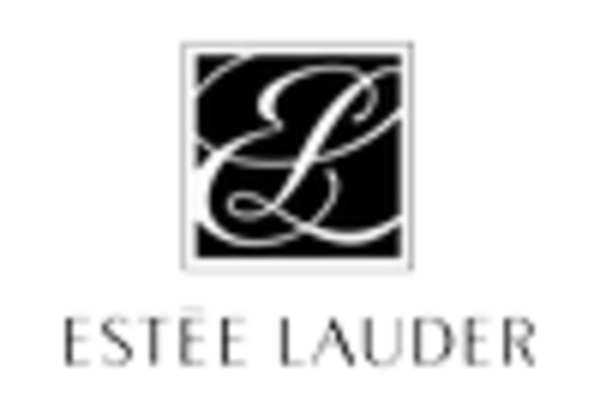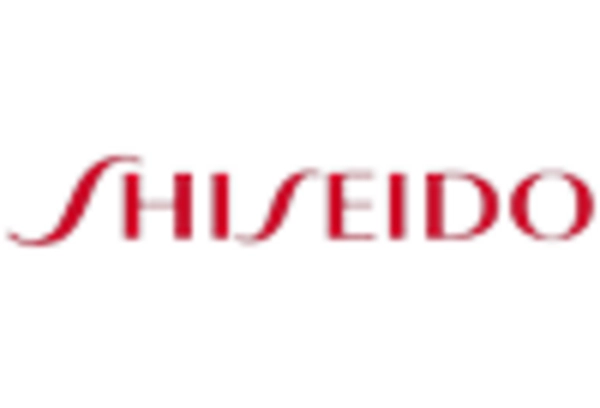Rise in Health Consciousness
The increasing awareness of health and wellness among consumers appears to be a pivotal driver for the Cosmetics Personal Care Store Market. As individuals become more conscious of the ingredients in their personal care products, there is a growing demand for natural and organic cosmetics. This trend is reflected in market data, which indicates that the organic personal care segment is projected to grow at a compound annual growth rate of over 10% in the coming years. Consumers are actively seeking products that are free from harmful chemicals, which has led to a surge in brands that emphasize clean beauty. Consequently, the Cosmetics Personal Care Store Market is witnessing a shift towards transparency in ingredient sourcing and formulation, as brands strive to meet the evolving preferences of health-conscious shoppers.
Sustainability and Ethical Consumerism
The growing emphasis on sustainability and ethical consumerism is increasingly shaping the Cosmetics Personal Care Store Market. Consumers are becoming more discerning about the environmental impact of their purchases, leading to a demand for eco-friendly and ethically sourced products. Brands that prioritize sustainable practices, such as using recyclable packaging and cruelty-free ingredients, are likely to resonate with environmentally conscious shoppers. Market data indicates that the sustainable beauty market is projected to reach a value of over 13 billion in the next few years, highlighting the potential for growth in this sector. As consumers align their purchasing decisions with their values, the Cosmetics Personal Care Store Market must adapt to these expectations by integrating sustainability into their product offerings and corporate practices.
Growing Demand for Male Grooming Products
The rising acceptance of male grooming and personal care products is emerging as a significant driver for the Cosmetics Personal Care Store Market. Traditionally, the cosmetics market has been predominantly female-oriented; however, recent trends indicate a shift as more men seek grooming products tailored to their needs. This includes skincare, haircare, and cosmetic products designed specifically for men. Market data suggests that the male grooming segment is expected to grow at a rate of approximately 6% annually, reflecting changing societal norms and increased awareness of personal appearance among men. As a result, the Cosmetics Personal Care Store Market is adapting to this demand by expanding product lines and marketing strategies to cater to the evolving preferences of male consumers.
Influence of Social Media and Beauty Influencers
The role of social media and beauty influencers in shaping consumer preferences is a notable driver for the Cosmetics Personal Care Store Market. Platforms such as Instagram and TikTok have become essential marketing tools for brands, allowing them to reach a wider audience and engage with consumers directly. Influencers often showcase products through tutorials and reviews, which can lead to increased brand awareness and sales. Market data indicates that products endorsed by influencers can experience a sales increase of up to 20% within a short period. This trend highlights the importance of digital marketing strategies in the Cosmetics Personal Care Store Market, as brands strive to leverage social media to connect with younger consumers who are more likely to trust recommendations from influencers over traditional advertising.
Technological Advancements in Product Development
Technological innovations in product formulation and manufacturing processes are significantly influencing the Cosmetics Personal Care Store Market. Advances in biotechnology and materials science have enabled the development of more effective and sustainable products. For instance, the incorporation of artificial intelligence in product recommendations and personalized skincare solutions is becoming increasingly prevalent. Market data suggests that the use of AI in beauty retail could enhance customer engagement and satisfaction, potentially increasing sales by up to 30%. Furthermore, the rise of augmented reality applications allows consumers to virtually try products before purchasing, thereby enhancing the shopping experience. These technological advancements not only improve product efficacy but also align with the modern consumer's desire for personalized and interactive shopping experiences within the Cosmetics Personal Care Store Market.


















Leave a Comment